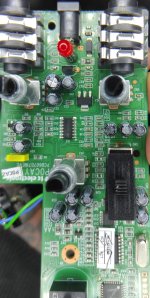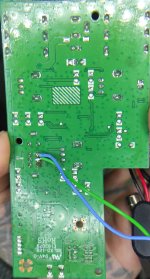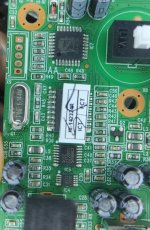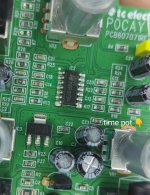Just to make sure i understood correctly
By that:
(You are essentially going to wire the pots in parallel, leg 1 to 1, 2 to 2...)
You mean: wiring in parallel, the Time and Repeats pots together right?
Yeah and no.
So the original just had a time mod.
What I believe is happening, and you can check the resistance yourself, see below, is the switch is switching one or more resistances in series or parallel with the time pot, effectively altering it's maximum setting/lowering maximum delay time.
Turn the time pot fully clockwise and counter clockwise and measure resistance between lugs 2 and 3, then repeat moving the switch around.
If all reading are different, in relation to switch settings, the switch is adding a parallel resistance.
If all the same, it's adding a series resistance. You can check that my measuring from the switch poles to time pot lugs.
Now, the reddit post added a momentary switch and parallel resistance to both the time and feedback pots. That 2 switches and two pots.
So time pot lug 2 -> new pot 100kB lug 2 ->switch in -> switch out -> new pot lug 3 -> time pot lug 3
You now have a variable parallel resistance for your glitch mod.
I would experiment with the pot value. That's the push button and por on top in the reddit post
The reddit post also added a feedback mod via footswitch, same as before but swap lugs 2 3 for 1 2.
This would add a tunable momentary feedback/oscillation.
Not sure if you have clearance to add a third footswitch so what you incorporate and how is up to you and the clearance you have.
If the 100k pots work well in both cases, you could get a dual concentric pot and stick it out the side in the top part of the open cavity and put one footswitch below it.
Hopefully that's clear as mud.
Ignore the below if you only want the glitch mod.
NOW, if there isn't room for a third footswitch and you want to do both mods, you could use a DPDT momentary footswitch AND a DPDT on on on mini toggle.
Wired correctly, you could toggle between glitch mod/glitch and feedback mod/feedback mod.
That would probably be the cleanest operation wise as 3 footswitches would be really crowded.
So wire as above, each pole of the footswitch for each circuit add the independent poles of the toggle anywhere in the signal flow, doesn't matter, whatever is easiest. Again, on pole per mod.
wire the toggle to:
make glitch, break feedback
Make glitch, make feedback
Break glitch, make feedback
Let me know if you need a drawing.
Where you fit it is up to you.
Obviously the footswitch has to go lower left. I'm adverse to putting pots and switches too close to footswitches. If there's room, I'd stick a dual concentric or 2 9mm pots on stripboard out the lower left side. Maybe a mini toggle can fit up near the LED? If not, it may have to go down on the left side.









